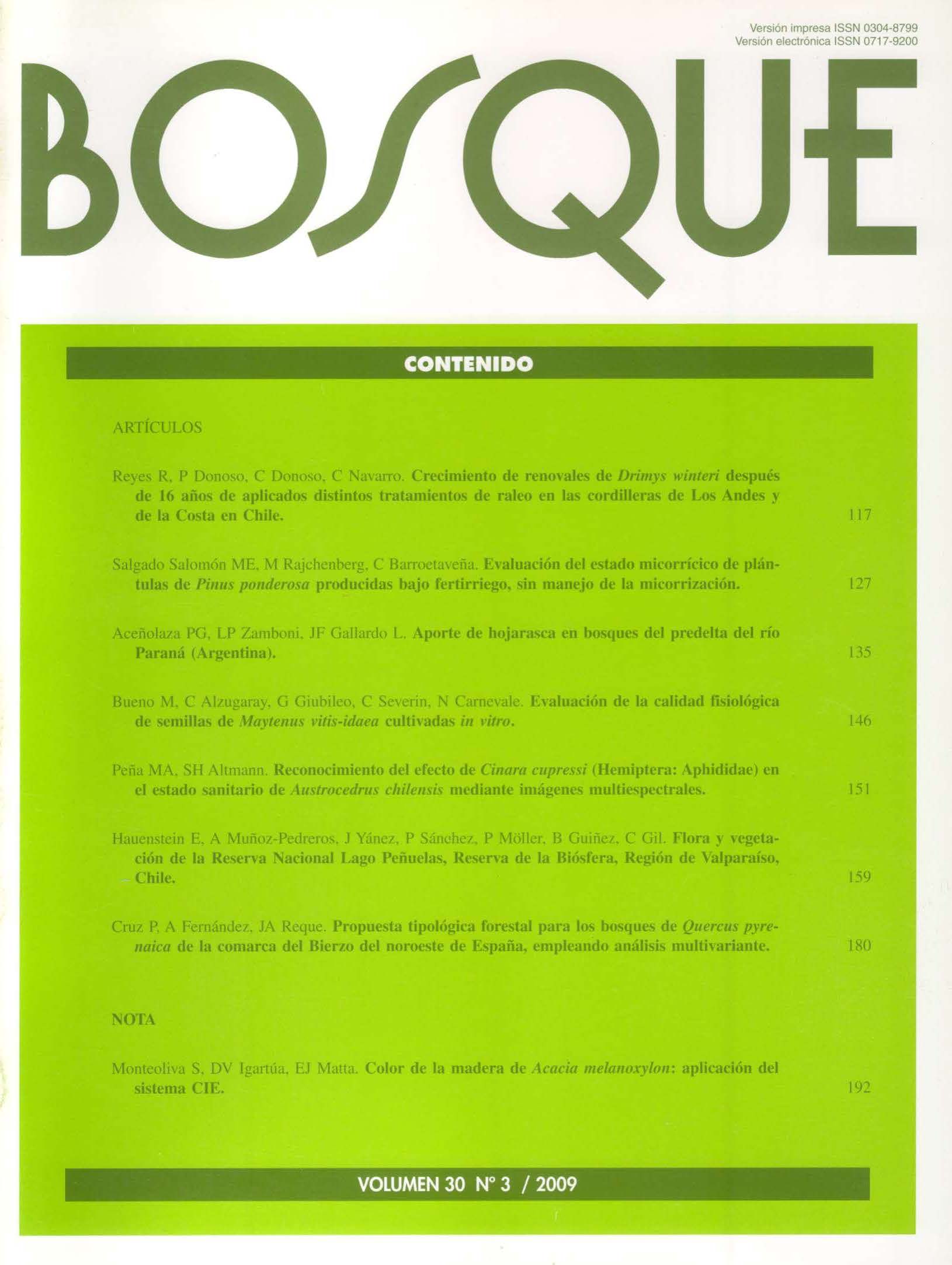Growth of Drimys winteri secondary forest stands following 16 years after thinning in the Andean and Costal Ranges of Chile
Main Article Content
Abstract
Secondary Drimys winteri forests are among the most common and productive forests in south-central Chile. However, their management has been scarce or many times inadequate due to lack of silvicultural knowledge. In 1986 and 1990 three field experiments were installed; one in the Coastal range of the province of Ranco (40° 09’ S) and two in the Andean range of the province of Llanquihue (41° 30’ S), to evaluate the effects of different intensities of thinning on the growth and mortality of 28-year-old Drimys winteri secondary forests. After 16 and 10 years of evaluation, great differences were observed among treatments within and between the three experiments. In Hueicoya (Coastal Range) plots thinned at a distance of 3 m had the highest productivity. In Lenca A (Andean Range) the high mortality rates due to windfalls in the plots with trees spaced at 3 and 4 m caused the control plots to have the highest productivity rates. In Lenca B (Andean Range) plots thinned at 2.5 m distance between trees had no significant differences with control plots. At an equal thinning intensity the responses were very different among experiments. We discuss that site quality, residual composition, exposure to winds and rooting characteristics may have influenced these results. In general, it is recommended to thin at 25-45% residual densities (2-3 m distance between trees at the age of thinning of 9-12 cm quadratic stand diameter), but always depending on the risk of windfall.

